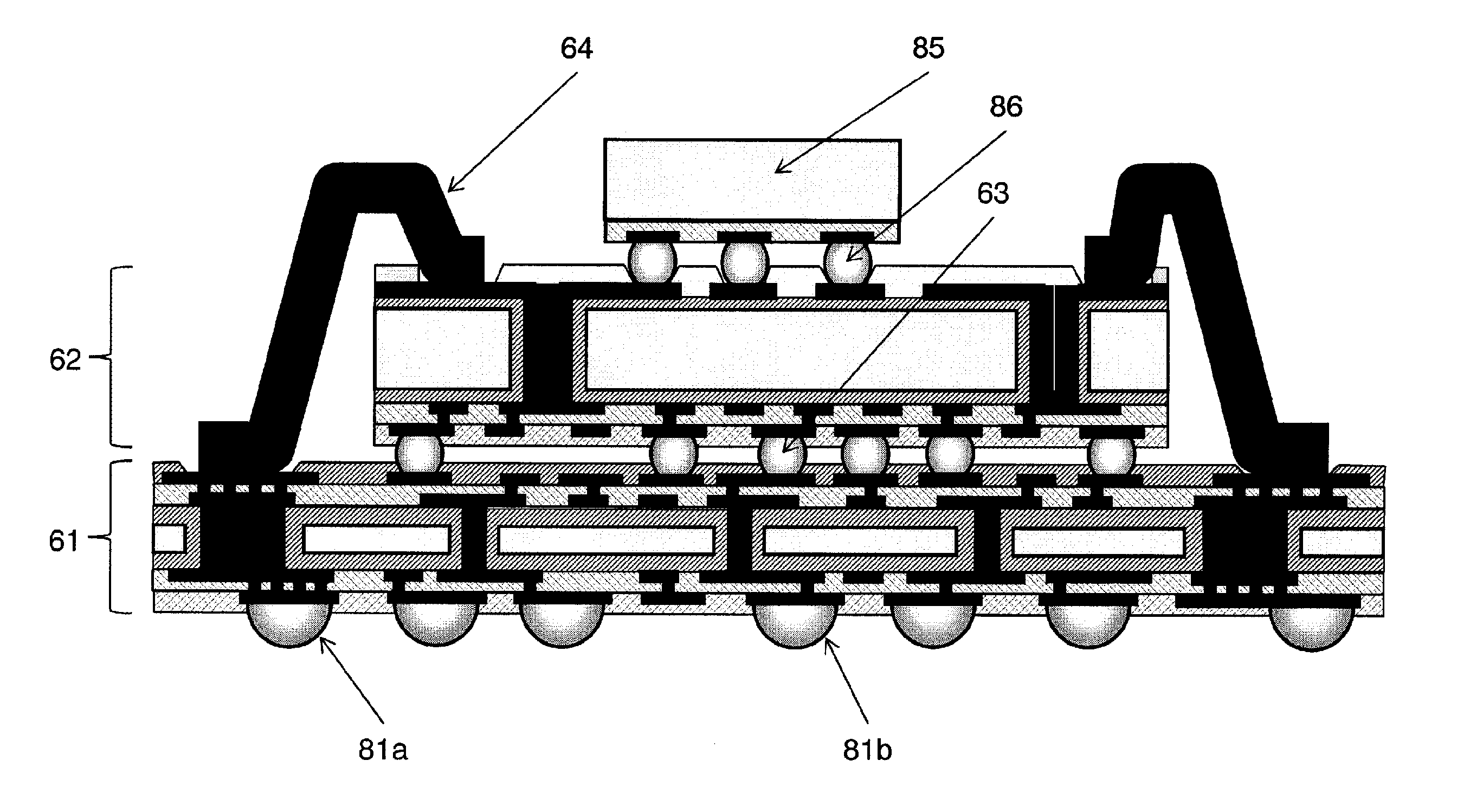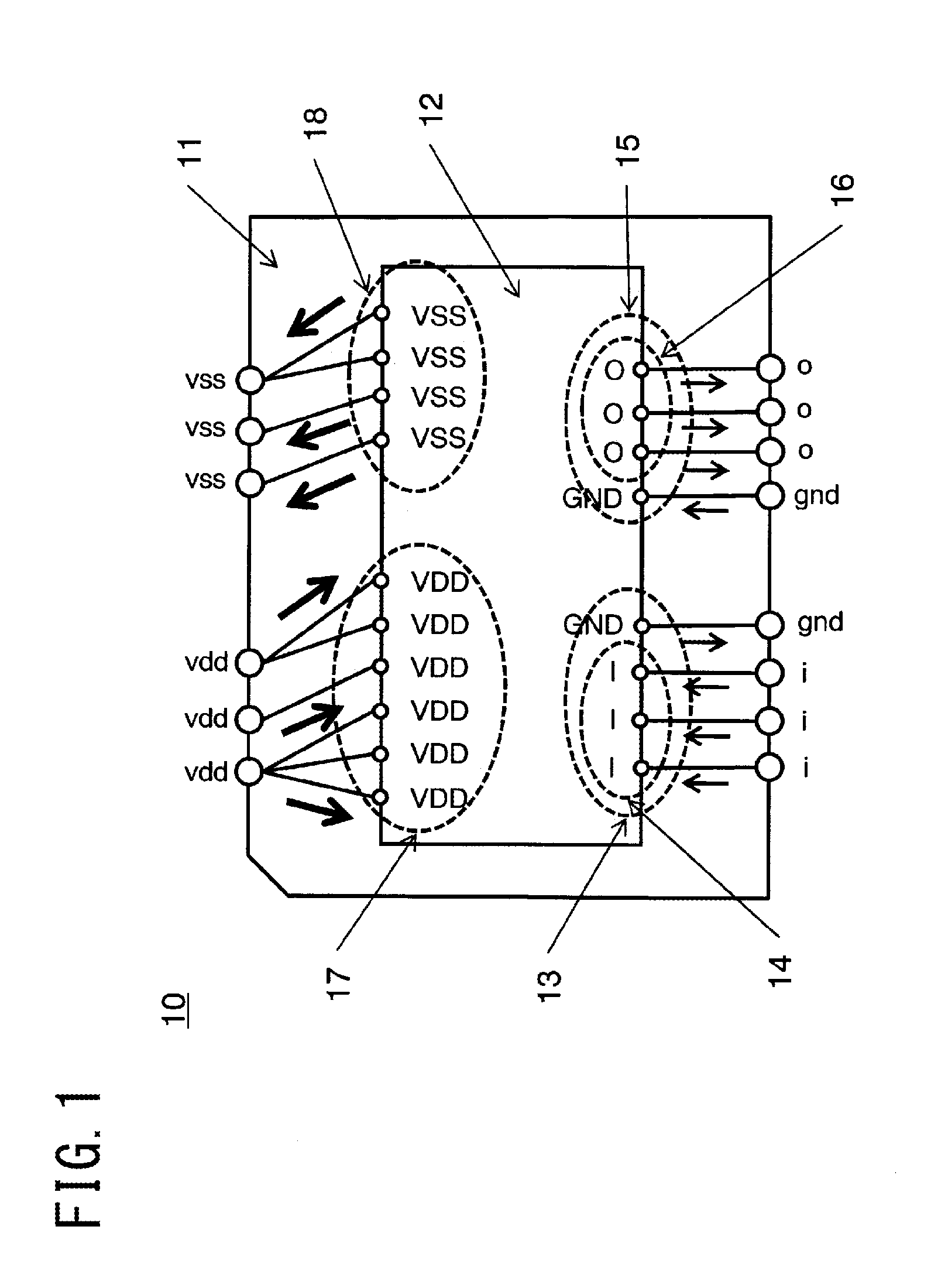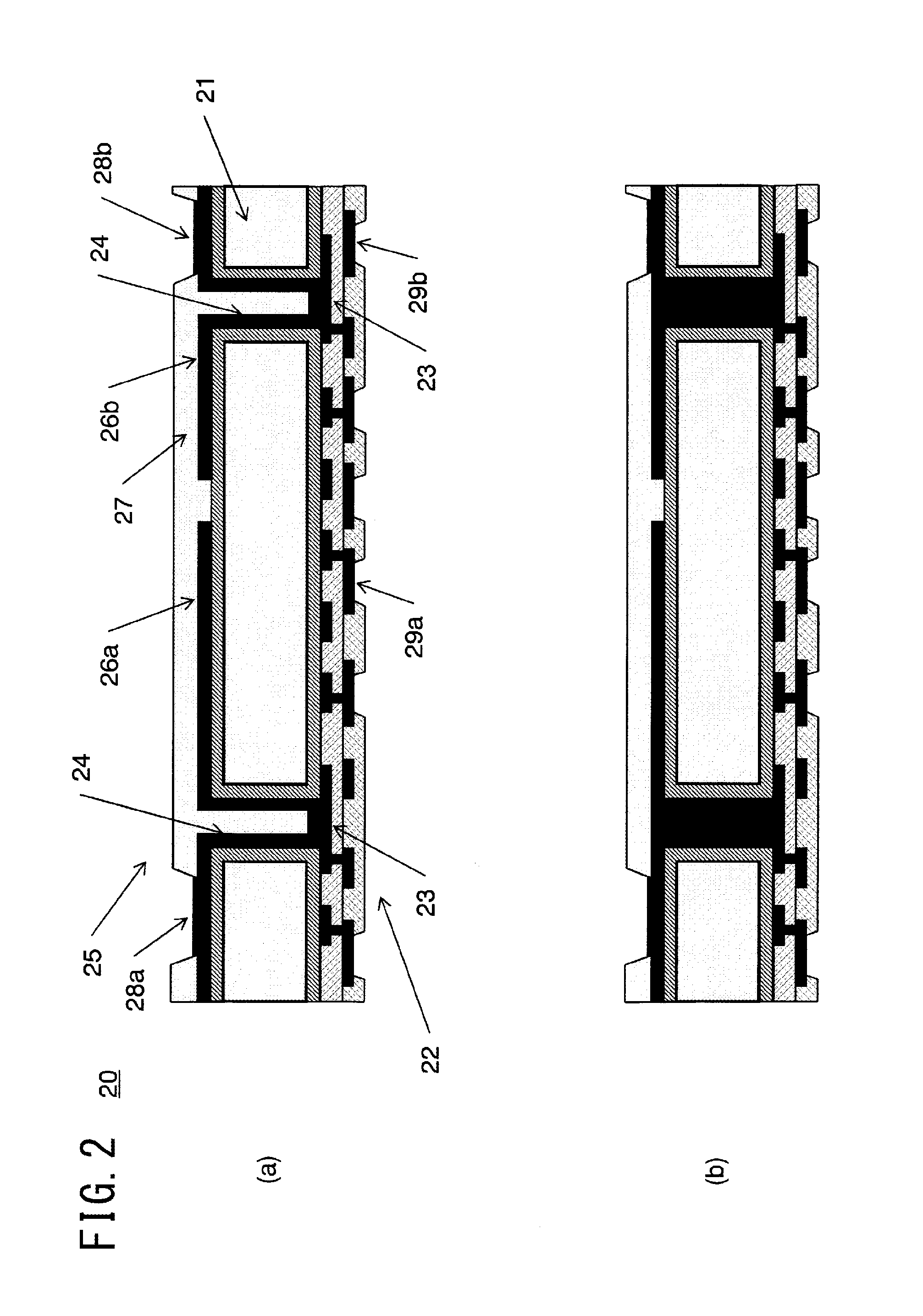Semiconductor module carrying the same
a technology of semiconductors and modules, applied in the field of construction methods, can solve the problems of increasing power, increasing the number of pins assigned to the power supply system, and reducing the mixing noise, so as to ensure the reliability of connection and ensure the stability of power supply
- Summary
- Abstract
- Description
- Claims
- Application Information
AI Technical Summary
Benefits of technology
Problems solved by technology
Method used
Image
Examples
first embodiment
[0094]FIG. 2 is a diagram showing the structure of a semiconductor chip 20 according to a first embodiment of the present invention.
[0095]In FIG. 2(a), 21 denotes a semiconductor substrate, where the lower side of this figure is a first main surface 22. Electronic circuits (not shown) are integrated on the first main surface 22 and a two-layered wiring layer is disposed on the surface thereof. Such the “two-layered wiring layer” is only an example and it may be formed by three or more layers. In this semiconductor substrate, through wirings (which are also referred to as through electrodes) 24 are formed to penetrate through the substrate 21 and to be connected to a designated layer that forms the wiring layer 23. The through wirings 24 are connected to wiring layers 26a and 26b disposed on a second main surface 25 of the semiconductor substrate. In this figure, the number of the wiring layer 26a is one and the number of the wiring layer 26b is also one; however, these numbers are n...
second embodiment
[0106]FIG. 3 is a diagram showing the structure of a semiconductor chip 30 according to the second embodiment of the present invention. In FIG. 3, the same numbers as those shown in FIG. 2 denote the same structural elements.
[0107]In FIG. 3(a), 31a and 31b denote through wirings, which are connected to the wiring layer 26a. 31c and 31d also denote through wirings, which are connected to the wiring layer 26b. In FIG. 3(a), the aforementioned through wirings (31a and so on) are arranged at a plurality of positions on the designated wiring layers 23 that constitutes the electronic circuits and the two-layered wiring layer, and are connected to the common wiring layer 26a or 26b. Since the electronic circuits that constitute the semiconductor chip contain the aforementioned wiring layers (23) which are at the same potential, the number of the terminals of this semiconductor chip can be reduced substantially by communizing the aforementioned wiring layers by the wiring layers 26a and 26b...
third embodiment
[0111]FIG. 4 is a diagram showing the structure of a semiconductor device according to the third embodiment of the present invention, on which the semiconductor chip 20 shown in FIG. 2 is mounted. In FIG. 4, the same numbers as those shown in FIG. 3 denote the same structural elements. In FIG. 4, 40 denotes the semiconductor devices, and 41 denotes a conductive ball which is disposed in the opening 29a or 29b and which constitutes a ball grid array (BGA). The ball 41 is made of a metal material such as solder (preferably, lead-free solder). In addition, in this figure, a device called “chip size BGA package” is shown as a configuration example of the “semiconductor device”. The semiconductor device of FIG. 4 is similar in structure to the “semiconductor chip” shown in FIG. 2. However, the semiconductor chip of FIG. 2 is in the state of being cut out from a wafer and no protective film for enhancing the environmental resistance is provided. Unlike this, the semiconductor device of FI...
PUM
 Login to View More
Login to View More Abstract
Description
Claims
Application Information
 Login to View More
Login to View More - R&D
- Intellectual Property
- Life Sciences
- Materials
- Tech Scout
- Unparalleled Data Quality
- Higher Quality Content
- 60% Fewer Hallucinations
Browse by: Latest US Patents, China's latest patents, Technical Efficacy Thesaurus, Application Domain, Technology Topic, Popular Technical Reports.
© 2025 PatSnap. All rights reserved.Legal|Privacy policy|Modern Slavery Act Transparency Statement|Sitemap|About US| Contact US: help@patsnap.com



